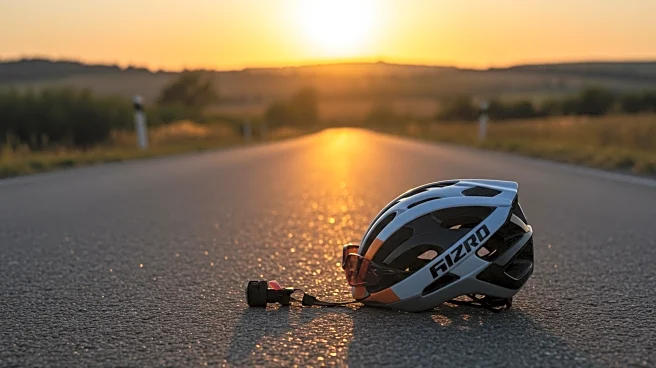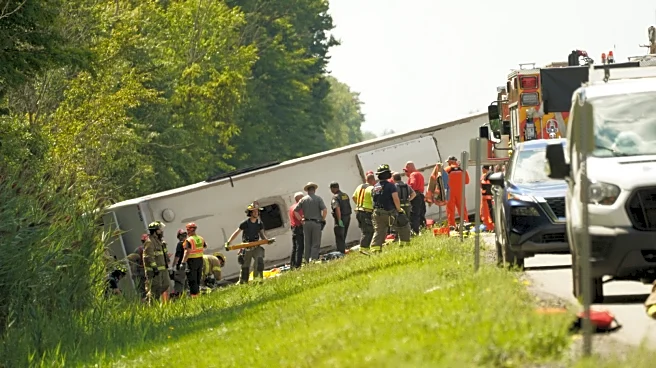What is the story about?
What's Happening?
Spanish cyclist Ivan Melendez Luque, aged 17, tragically died following a crash during the second stage of the Vuelta Ribera del Duero race in Soria province. The young athlete, part of the Tenerife-Cabberty U19 team, was involved in a mass pileup that resulted in fatal injuries. Several other cyclists were also seriously injured in the incident. The crash led to a shortage of ambulances at the scene, prompting the cancellation of the stage. UCI President David Lappartient extended his condolences to Melendez Luque's family via social media.
Why It's Important?
The death of Ivan Melendez Luque highlights the inherent risks associated with competitive cycling, particularly in multi-stage races. This incident may prompt discussions within the cycling community regarding safety measures and emergency response protocols during races. The tragedy underscores the need for adequate medical support and infrastructure to handle accidents effectively. It also raises awareness about the physical demands and dangers faced by young athletes in high-stakes competitions, potentially influencing future policies to enhance safety standards.
What's Next?
In the wake of this tragic event, cycling authorities and race organizers may review and potentially revise safety protocols to prevent similar occurrences. There could be increased scrutiny on race conditions, emergency preparedness, and the availability of medical resources. Stakeholders, including teams and governing bodies, might advocate for stricter regulations to ensure the safety of participants, especially young athletes. The incident may also lead to broader discussions on athlete welfare and the responsibilities of sports organizations in safeguarding their competitors.
Beyond the Headlines
The incident involving Ivan Melendez Luque may have long-term implications for the cycling community, particularly in terms of ethical considerations surrounding youth participation in high-risk sports. It could spark debates on the balance between competitive ambition and athlete safety, influencing cultural attitudes towards young athletes in demanding sports environments. Additionally, the tragedy might lead to increased support for mental health resources for athletes coping with the pressures and risks of competitive sports.
AI Generated Content
Do you find this article useful?












